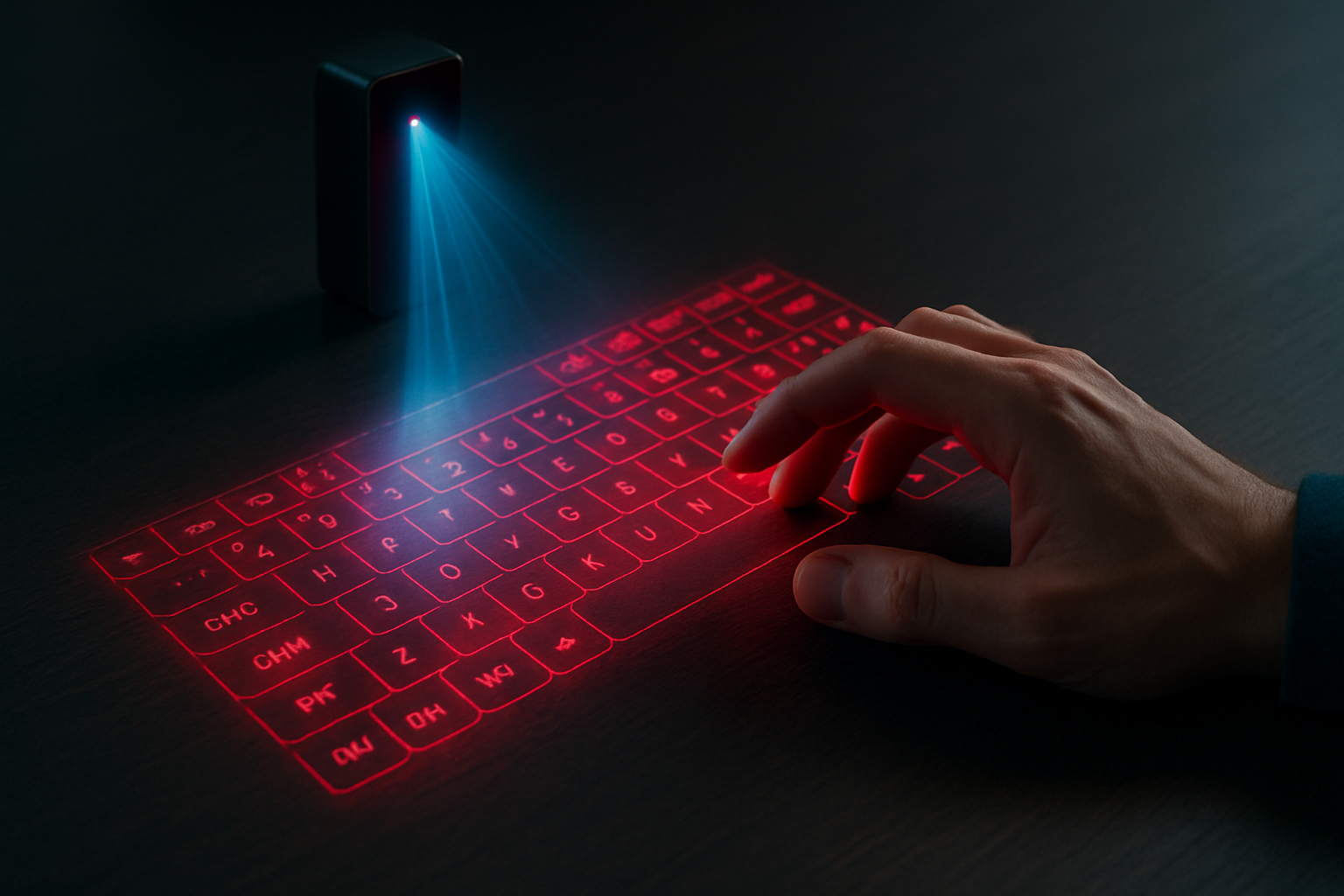Holographic Keyboards: Touch-Free Typing Takes Flight
In an era where digital interfaces are becoming increasingly seamless, holographic keyboards are emerging as a futuristic solution to our everyday typing needs. This innovative technology promises to revolutionize how we interact with our devices, offering a glimpse into a world where physical keyboards may become obsolete. As we delve into this cutting-edge development, we'll explore its potential to reshape our digital landscape and the challenges it faces in becoming a mainstream input method.

How Holographic Keyboards Work
At the heart of holographic keyboard technology lies a complex interplay of optics and sensors. A tiny projector emits a laser-generated image of a standard QWERTY keyboard onto a surface. Simultaneously, an infrared light plane is projected just above the virtual keys. When a user’s fingers break this plane, cameras capture the movement and translate it into keystrokes. The system’s software then interprets these actions and sends the corresponding input to the connected device.
The Evolution of Projection Technology
The journey to viable holographic keyboards has been paved with advances in miniature projection systems. Early prototypes were bulky and required significant power, making them impractical for portable use. However, recent developments in laser diode technology have led to projectors small enough to fit into smartphones or wearable devices. These micro-projectors can now produce crisp, bright images even in well-lit environments, addressing one of the primary challenges of holographic interfaces.
Sensing the Virtual: Infrared and Beyond
The accuracy of holographic keyboards hinges on their ability to detect precise finger movements. While infrared sensing has been the go-to technology, researchers are exploring alternatives like time-of-flight sensors and advanced machine learning algorithms to improve accuracy and reduce false inputs. These innovations aim to make holographic typing as reliable and responsive as physical keyboards, if not more so.
The Ergonomic Advantage
One of the most compelling arguments for holographic keyboards is their potential ergonomic benefits. Traditional keyboards can contribute to repetitive strain injuries, but holographic alternatives allow for more natural hand positioning and can be easily adjusted to suit individual users. The ability to project keyboards onto any surface at any angle opens up new possibilities for comfortable, customizable typing experiences.
Challenges on the Horizon
Despite their promise, holographic keyboards face several hurdles before widespread adoption. The lack of tactile feedback remains a significant issue for touch typists accustomed to physical keys. Researchers are exploring haptic feedback solutions, including ultrasonic waves that create the sensation of touch in mid-air. Additionally, the technology must overcome issues with ambient light interference and improve energy efficiency to be practical for all-day use in mobile devices.
Market Potential and Industry Response
As holographic keyboard technology matures, major tech companies are taking notice. While still in the early stages, industry analysts project the global market for holographic display technologies, including keyboards, could reach $5.5 billion by 2024. This potential has sparked interest from both established manufacturers and startups, with several companies already offering prototype devices in the $200-$500 range.
The Future of Digital Interaction
Looking ahead, holographic keyboards represent just the beginning of a broader shift towards spatial computing interfaces. As augmented reality (AR) and virtual reality (VR) technologies advance, we may see holographic keyboards integrated into immersive environments, allowing users to type on virtual surfaces in three-dimensional space. This convergence of technologies could redefine our concept of workspaces and digital interaction.
A Typing Revolution in the Making
Holographic keyboards stand at the intersection of science fiction and technological innovation, offering a glimpse into a future where our interactions with digital devices are more fluid and adaptable than ever before. While challenges remain, the potential benefits in terms of portability, ergonomics, and versatility make this an exciting field to watch. As developers continue to refine the technology, we may soon find ourselves typing on thin air, ushering in a new era of human-computer interaction that breaks free from the constraints of physical hardware.





